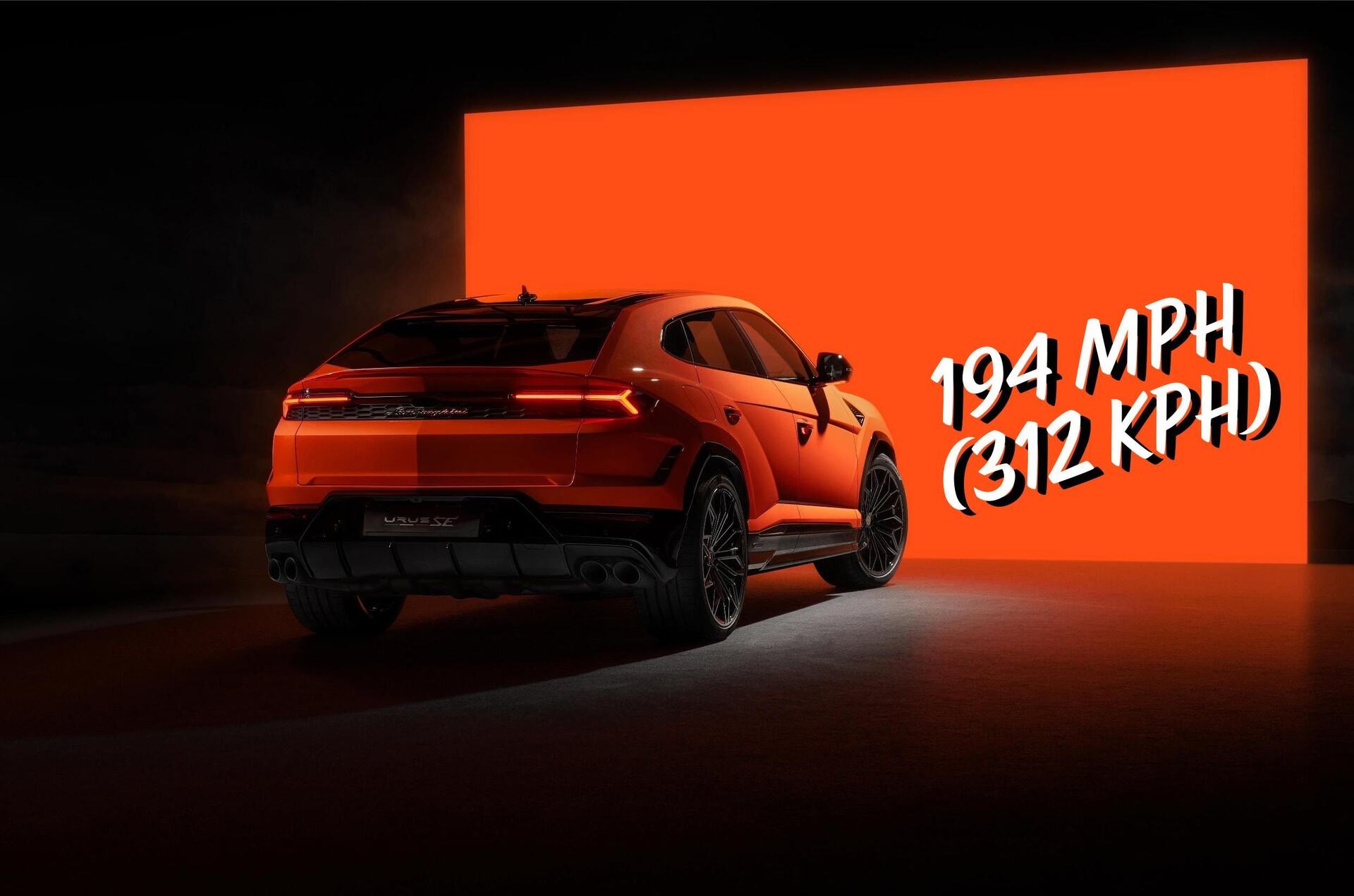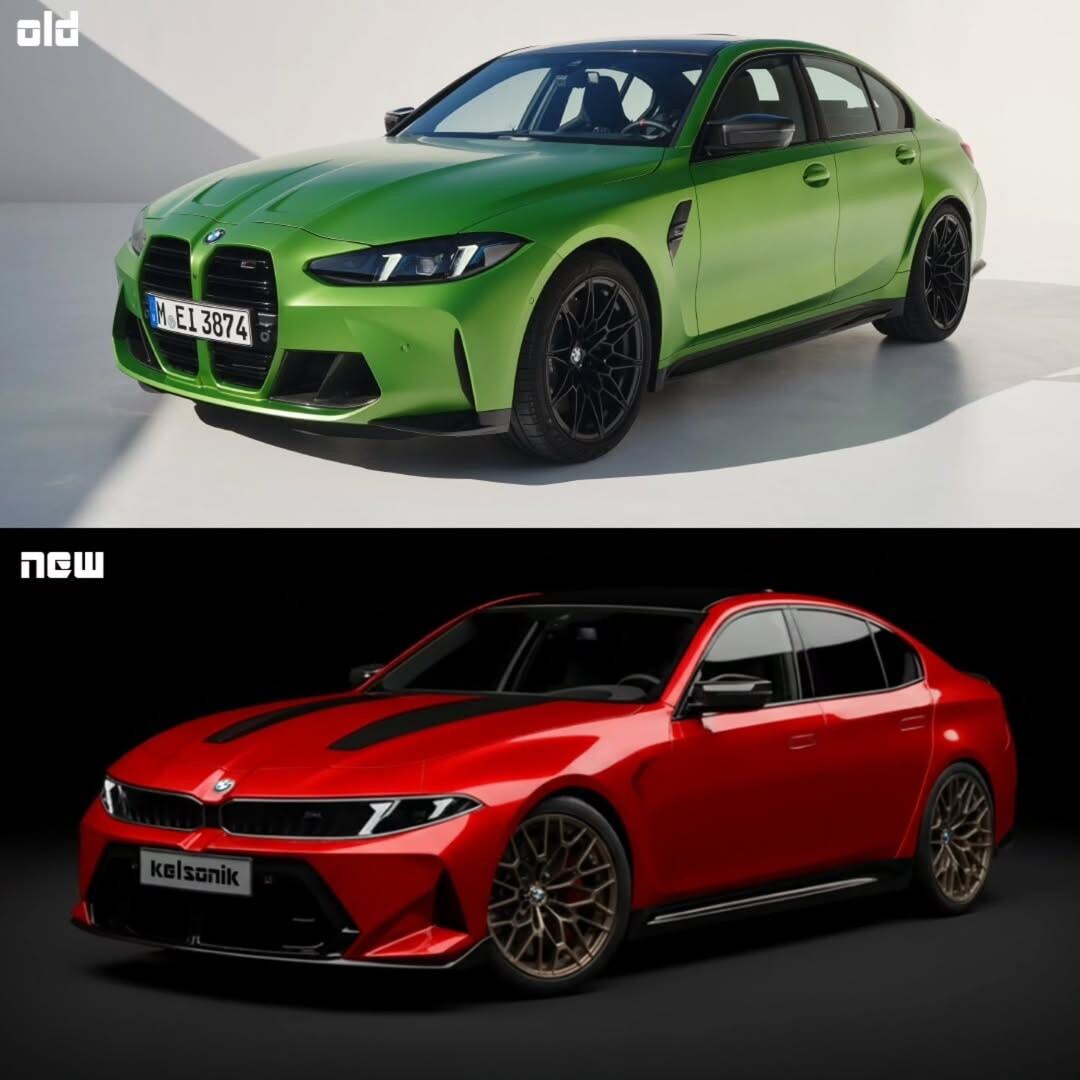- autoevolution weekly
- Posts
- Built in China Isn’t the Same As "Made in China"
Built in China Isn’t the Same As "Made in China"
autoevolution weekly (Nov 9th, 2025)
Welcome to autoevolution weekly, thank you for being a subscriber! If this newsletter was forwarded to you, here’s a handy link if you’d like to subscribe yourself.
Also, if you like our content and want to see autoevolution more often in your Google results/newsfeed, please add us to your preferred sources.
Table of Contents
The best HR advice comes from people who’ve been in the trenches.
That’s what this newsletter delivers.
I Hate it Here is your insider’s guide to surviving and thriving in HR, from someone who’s been there. It’s not about theory or buzzwords — it’s about practical, real-world advice for navigating everything from tricky managers to messy policies.
Every newsletter is written by Hebba Youssef — a Chief People Officer who’s seen it all and is here to share what actually works (and what doesn’t). We’re talking real talk, real strategies, and real support — all with a side of humor to keep you sane.
Because HR shouldn’t feel like a thankless job. And you shouldn’t feel alone in it.
Built in China Isn’t the Same As “Made in China”
By: Sergiu Tudose
Modern cars today can be conceived in one country, engineered in a second, with various components hailing from a third and purely “national” automobiles are mostly a thing of the past. Meanwhile, the expression “made in” has become more of a marketing gimmick and I can’t tell you how many times I’ve heard people complain about where cars are being manufactured, even among my peers, who are supposed to know better.

Mazda EZ-6/6e & Tesla production line
The second some carmaker is purchased by a foreign company, or they decide to build a manufacturing facility abroad, their products stop becoming synonymous with their country of origin, which is straight up nonsense. This confusion becomes particularly heated when China enters the discussion. Some consumers still think that “built in China” means you’re looking at a “Chinese car”. So, to them, a Mazda EZ-6, aka the Mazda6e, which is assembled in Nanjing by the Changan-Mazda joint venture, is the same as a BYD or a NIO.
Where a car is produced shouldn’t weigh more than brand identity. Mazda is a good example because of how its Chinese production is structured. While the EZ-6 is assembled through that previously mentioned joint venture (as Chinese law dictates when it comes to domestic manufacturers), its DNA, from the engineering philosophy to the software, is still undeniably Japanese and calling the Mazda EZ-6/6e “Chinese made” basically erases decades of design heritage and intellectual ownership.
Then there’s Tesla. People tend to (or choose to?) forget that Elon had a gigafactory built in Shanghai years ago. Cars produced there serve both Europe and Asia, and the quality is just as good as anywhere else. And yes, the Tesla brand, tech stack and corporate ecosystem remain 100% American. Shanghai only does what Fremont and Austin say.
These distinctions matter, because language shapes perception and perception drives purchasing decisions, among other things. When people talk about “Chinese EVs flooding Europe”, they don’t always differentiate between the Mazda6e and the BYD Seal. One is a Japanese product; the other is a Chinese product – even though they’re both “made in China.”
Americans in particular should know better, too, because GM, Ford and Stellantis all have manufacturing plants in both Mexico and Canada, yet nobody’s ever called the Lincoln Nautilus “Canadian”, nor have I ever heard someone referring to their GMC Terrain as “Mexican”.
You didn’t know that? The third-generation GMC Terrain, unveiled last year, is already in production at the San Luis Potosi plant in Mexico, a site that had already been making GM products for over a decade now. The Chevy Equinox is made there as well, and before that, there was the Trax too, another “Mexican-made” car.
Note: please continue reading the full editorial on our site.
The Fastest SUVs in the World as of 2025
By: Mircea Panait
There was a time when the now-commonplace sport utility vehicle wasn't called as such. The first-generation Ford Bronco is the OG that comes to mind, with the 1966 model year brochure reading all-purpose vehicle with three distinct body styles. From cheapest to most expensive, those options were the Roadster, Sports Utility pickup, and the fully-roofed Wagon.

Lamborghini Urus SE
Regarding the 'sport' part in sport utility vehicle, this word started being taken seriously in the latter half of the 1980s. The Raging Bull of Sant'Agata Bolognese set the sporty tone with the LM 002, which packed naturally aspirated V12 oomph from the Countach.
Remember the GMC Typhoon? How about the Jeep Grand Cherokee 5.9 Limited, Infiniti FX 45, Mercedes-Benz ML 55 AMG, Land Rover Range Rover Sport Supercharged, Porsche Cayenne Turbo S, and the poor-selling Audi Q7 V12 TDI? It goes without saying that current production utility vehicles are even more capable than their pivotal forerunners, but as you're well aware, not all SUVs are created equal.
When it comes to straight-line performance, namely top speed and acceleration, 2025 can be considered the year of peak SUV. The following top 20 kicks off with a four-cylinder mill augmented by a plug-in system, whereas the fastest production SUV in terms of top speed packs a hot-vee lump with plug-in hybrid assistance.
That said, let's get cracking with the smallest-engined SUV that made our list for 2025. For the full write-up and details, please continue reading on our site.
Lamborghini Urus SE – 194 mph (312 kph)
Ferrari Purosangue – Over 193 mph (310 kph)
Aston Martin DBX S – 193 mph (310 kph)
Bentley Bentayga Speed – 193 mph (310 kph)
Porsche Cayenne Turbo GT – 190 mph (305 kph)
Audi RS Q8 performance – 190 mph (305 kph)
Porsche Cayenne Turbo E-Hybrid – 183 mph (295 kph)
Dodge Durango SRT Hellcat – 180 mph (290 kph)
Range Rover Sport SV – 180 mph (290 kph)
Alpina XB7 – 180 mph (290 kph)
Jaguar F-Pace SVR 575 Edition – 178 mph (286 kph)
Maserati Grecale Trofeo – 177 mph (285 kph)
Alfa Romeo Stelvio Quadrifoglio – 177 mph (285 kph)
BMW X5 M Competition – 177 mph (285 kph)
BMW X6 M Competition – 177 mph (285 kph)
BMW X4 M Competition – 177 mph (285 kph)
BMW XM Label – 175 mph (282 kph)
Mercedes-AMG GLE 63 S – 174 mph (280 kph)
Mercedes-AMG GLS 63 – 174 mph (280 kph)
Mercedes-AMG GLC 63 S E PERFORMANCE – 171 mph (275 kph)
Tokyo Is Back in Automotive Fashion, as Shown By the Glamorous 2025 Japan Mobility Show
By: Aurel Niculescu
The 2025 Japan Mobility Show is only the second edition carrying the new moniker - it's been known as the Tokyo Motor Show for almost seven decades (from 1954 to 2023) – but it's already taking over the prime time of the automotive industry as if the 2020 COVID pandemic and the downfall of the classic auto show never happened.

2025 Japan Mobility Show logo (fashionable!)
Tokyo's late fall automotive exhibition was originally called the All Japan Motor Show and took place annually from 1954 to 1973 and again from 2000 to 2005. In the interim years and after 2007, it was relegated to a classic bi-annual apparition right alongside other major international events from the automotive industry. Japan's automotive industry has always relied on it as a show of innovation and perseverance, but it almost went the way of the dodo in 2020 when the big health crisis struck the planet.

Mazda Vision X-Coupe
This year, the automotive exhibition confirms that was the right move, as Japanese automakers were eager to showcase their latest ideas. 2025's JMS – also known as the former Tokyo Motor Show – had a cool vibe: the future of the automotive industry is coming, and what powers it remains a cool mystery. Affordable EVs weren't necessarily a priority – Honda showcased the 0 Alpha crossover SUV and the boxy Super-One, but they're aimed at markets like India or Japan, not international markets.
The major exception was a very notorious one – the flashy concept for the next-generation Toyota Corolla. It does hedge its bets, as gasoline, hybrid, and EV power will be available according to regional market needs whenever the series production model debuts, including in North America. Toyota, Lexus, Century, Honda, Mazda, and Mitsubishi all showed cool and fancy concepts, but not all of them even had powertrains, let alone full details.

Next-Gen Toyota Corolla Concept
There were some genuinely interesting ideas – like the Lexus LS six-wheel minivan, the Century One-of-One coupe, and the Mazda Vision X Coupe. Given its name, JMS also had a bizarre collection of two-, three-, and four-wheeled vehicles, together with no-wheeled ones, with wings, or with legs. But that was to be expected – even the Tokyo Motor Show often leaned into the wacky side of the Japanese way of life and line of thinking, sometimes for the good and sometimes for the worse.
Note: for the full article, please continue reading on our site.
Remembering the Hobby Landhaus, the Travel Trailer Built Like a Country House
By: Elena Gorgan
Before tiny houses were even a thing, let alone the blown-up craze that's still sweeping the world, there was Hobby Caravan delivering the goods. The Polish RV specialist, inarguably one of the most iconic in Europe, did so with the Landhaus series of travel trailers, which they aptly described as "the realization of our dream for a mobile home."
Harald Striewski founded Hobby-Wohnwagenwerk, today best known as Hobby Caravan, in 1967, but he'd already been building caravans in his own spare time for a few years by then. Three more years, and his 42-employee little factory was producing six caravans a day.

Hobby branched out of caravans, into motorhomes, much later, only when it'd already built a solid reputation as one of Europe's most innovative caravan specialists. The Landahaus series, which effectively translates to "country house," is a good example of the kind of work they did – and still do.
The Hobby Landhaus was in production since the early 1980s until 2018-2019, disappearing quite unceremoniously, without as much as a formal announcement. During this time, it was one of the most popular, iconic, and instantly recognizable products from Hobby, which makes the following even stranger: it's still a (poorly-documented) mystery.
There is no history of the Landhaus or as much as a mention of it on the official Hobby page, no definite timeline, and no record of existing floorplans. As far as official records are concerned – or Google – production for Landhaus never ceased, if only because there's no trace of its existence.

Every once in a while, a Landhaus emerges for sale on the second-hand market. An older, '80s unit will attract attention right away because of the very rustic, cottage-like styling that makes it appear larger than it really is. Newer units are bigger, longer, and heavier, but with more modern styling and every creature comfort of home.
The one thing that never changed about the Landhaus over the years was the idea that it was meant to be a family home on wheels. To this idea, Hobby – or founder Striewski, acting as the designer, better said, sacrificed aerodynamics and towability. This sacrifice got to such an extent in later years that the Landhaus travel trailers were imagined as static caravans instead of traveling units, a sort of park version of the original unit.
For the full article, please continue reading on our site.
Spy Photos and Renderings (Hyundai & BMW edition)
By: Mircea Panait
In a relatively short timeframe, Hyundai established itself as a leading automaker in the electric vehicle space with the Ioniq line of battery-electric models. Following the Ioniq 5 crossover, 6 sedan, and 9 people carrier, the South Korean manufacturer is going downmarket with a EU-centric hatchback: the Veloster-inspired 2026 Hyundai Ioniq 3, coming with Ioniq 6-like split headlights and slightly limited rear visibility.
Pictured on five-lug wheels instead of a four-lug setup like the entry-level Inster, the Ioniq 3 borrows heavily from the Ioniq Three Concept. Revealed at the Munich auto show, the concept features a lounge-inspired cabin instead of a far more conventional interior for the real thing. The centerpiece is the Pleos infotainment system, which utilizes a landscape-oriented touchscreen. While it may be next-gen infotainment, Hyundai didn't forget to incorporate physical controls for the most frequently used functions. And unlike Tesla, an instrument panel display is also featured.
—
Another prototype BEV that captured our attention this week is the iX3-derived BMW iX4, a Neue Klasse sport utility vehicle that largely mirrors the aesthetic of the internal combustion X4 and the completely new iX3. Due to its rear end, the iX4 could offer even more driving range than its best-in-segment brother. Instead of 673 kilometers (418 miles) in the WLTP for the GLC 400 4MATIC with EQ Technology, the iX3 tops 805 kilometers (500 miles) in 50 xDrive flavor.
This dual-motor powertrain should carry over to the iX4 at launch. While it's not clear if a single-motor version is called for, we do know that BMW has assigned ZA7 as the codename of the iX4 M. The bad news? BMW is allegedly discontinuing the internal combustion X4 because the X2 has grown in dimensions and starting price.
—
Meanwhile, Nikita Chuicko gave us the best rendering of the week in the form of a realistic take on the next-generation BMW M3 with internal combustion. Referred to as G84, the first series-production M3 with electrified assistance will supposedly enter production in July 2028.

The rendering artist masterfully blended G80 styling cues with Neue Klasse traits, which is exactly what camouflaged prototypes are suggesting for the heavily anticipated G84. What can be described as probably the final M3 with internal combustion is underpinned by the CLAR platform of the current generation.
M division chief executive officer Frank van Meel confirmed an inline-type engine with six cylinders for the next iteration of the M3, but we still don't know if the hybrid part of the equation is a 48-volt system or a full-hybrid solution. As long as it runs on dino juice and makes the right sounds, does it really matter what kind of hybrid assistance is coming to the G84?
Gemini Comes to Google Maps (and Android Auto)
By: Bogdan Popa
Gemini is here. Yes, you've heard it right, Gemini is finally available in Google Maps and Android Auto after months of uncertainty and speculation regarding its ETA.
Gemini is undoubtedly the biggest update of the year for Google users, replacing the outdated Google Assistant. Android Auto users have repeatedly blasted Google Assistant for the horrible experience it provided, so the debut of Gemini breathes new life into the hands-free interaction that should let us focus on the road.
Gemini can do all kinds of tricks in your car, beginning with typical things like making phone calls and sending text messages. It can send traffic reports using Google's conversational reporting (also available in Waze) and include landmarks in turn-by-turn guidance to make navigation more straightforward and convenient.
The new AI-powered assistant has also begun rolling out on Android Auto, but the experience here still requires further refinement. It can't process nicknames, and occasionally, it fails to process a request. The rollout for Android Auto users occurs in stages, so it may take some time until the broad availability stage is reached.
Android Auto 15.7 went live this week, but installing it doesn’t yet guarantee you’ll immediately get Gemini, due to the staggered rollout.
Congratulations for reaching the finish line!
🏁 🏁 🏁 🏁 🏁
From all of us at autoevolution, a sincere thank you for reading! Feel free to reply with suggestions. Replies to these emails are monitored!
Oh, and one more thing: if you like our articles, please click the button below to add autoevolution to your preferred sources!


